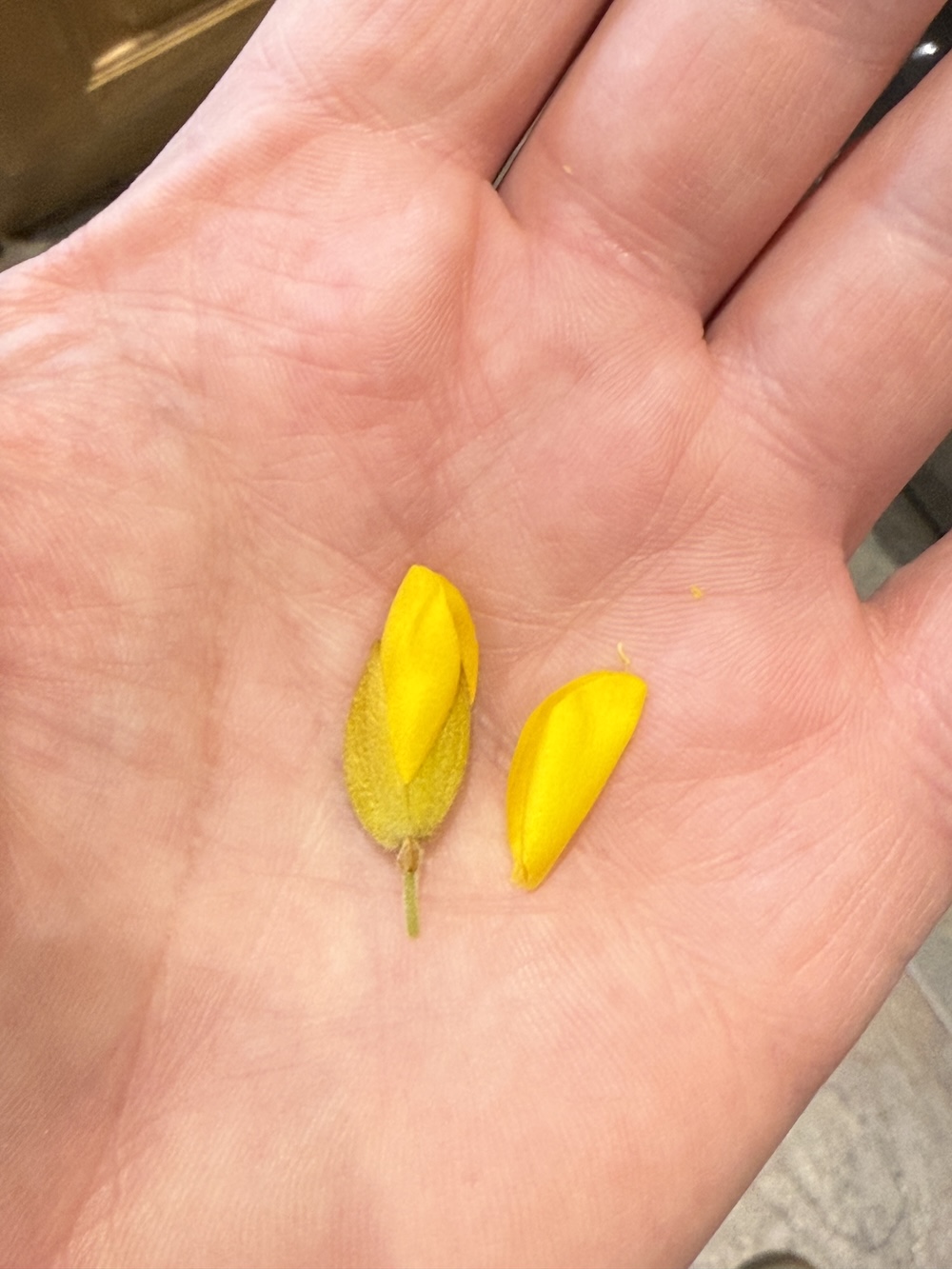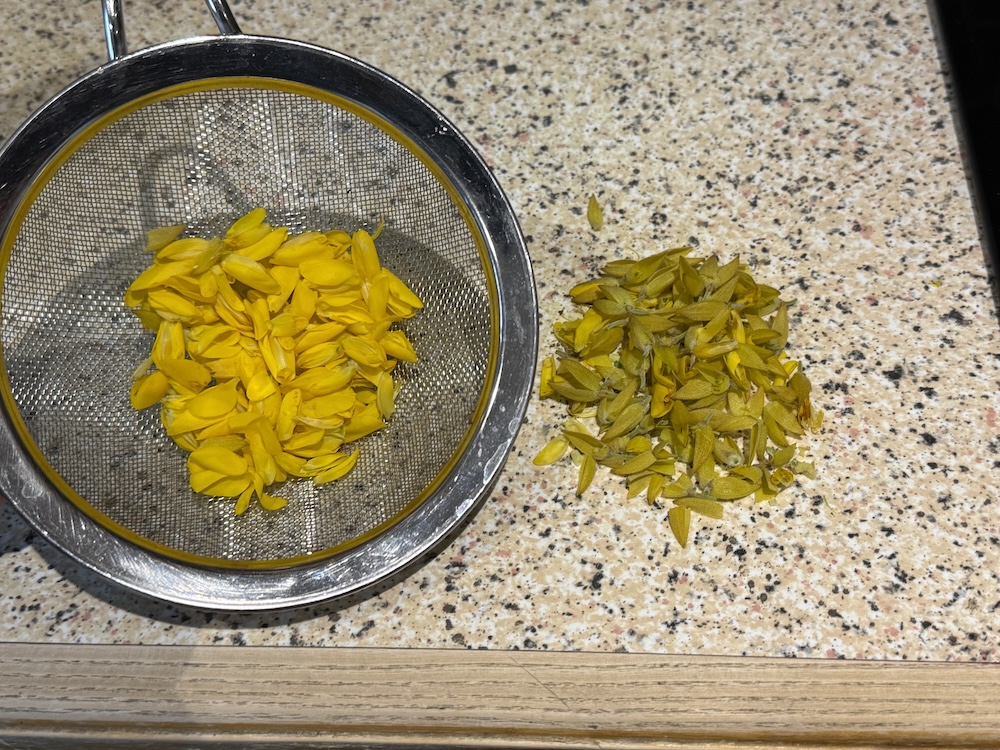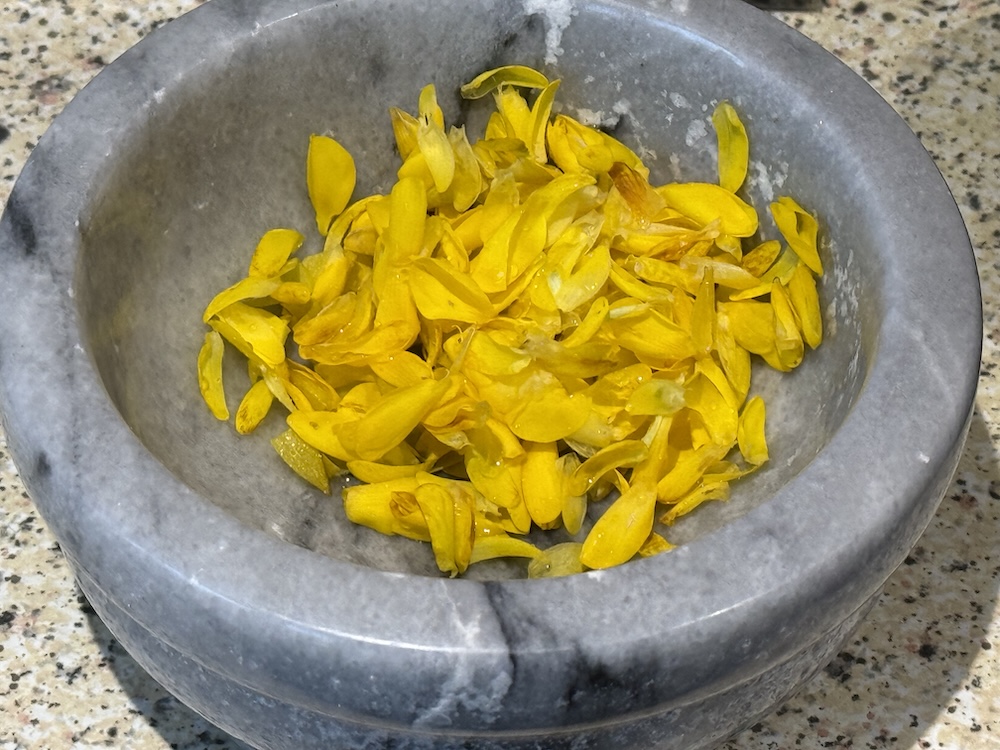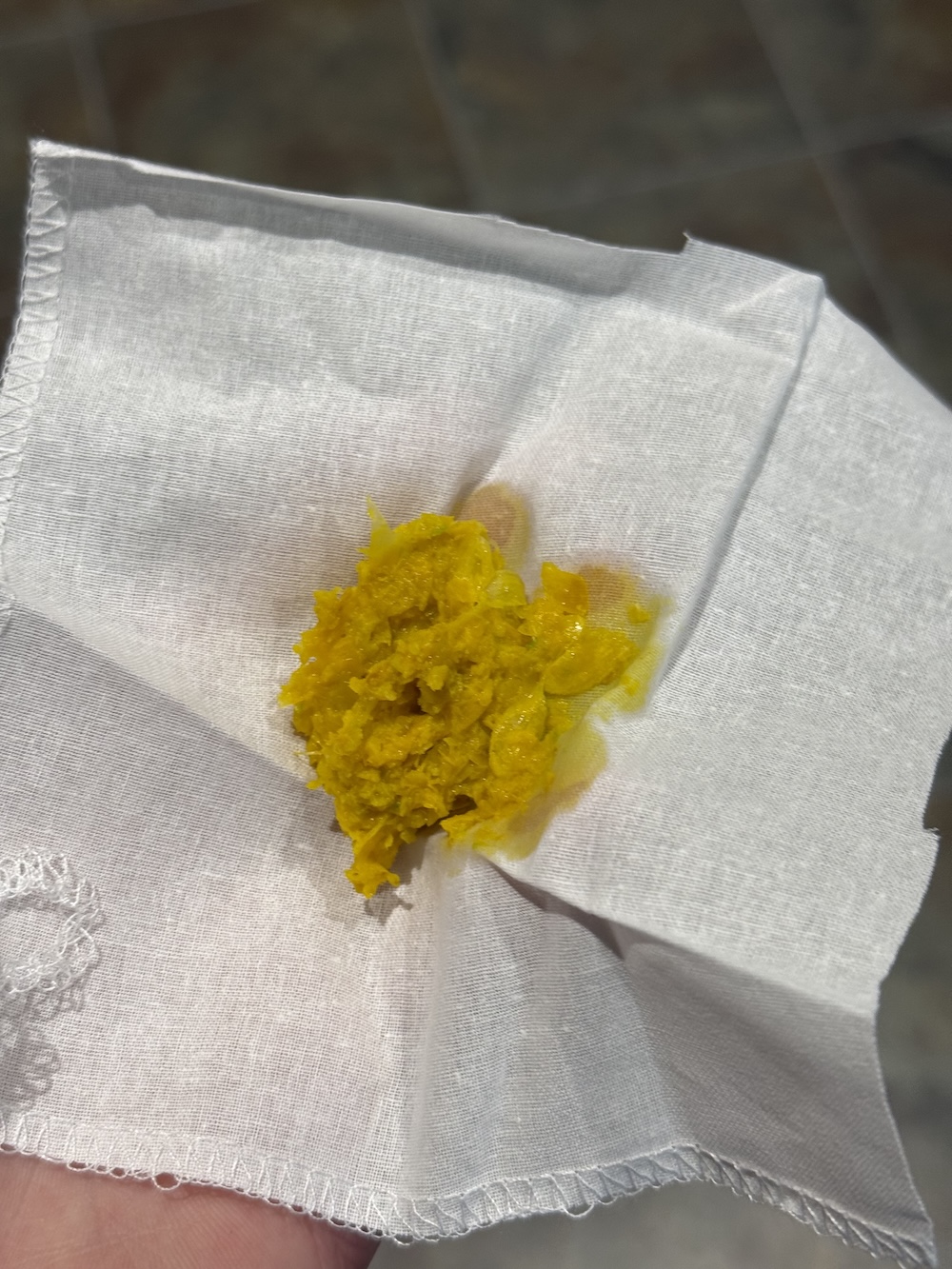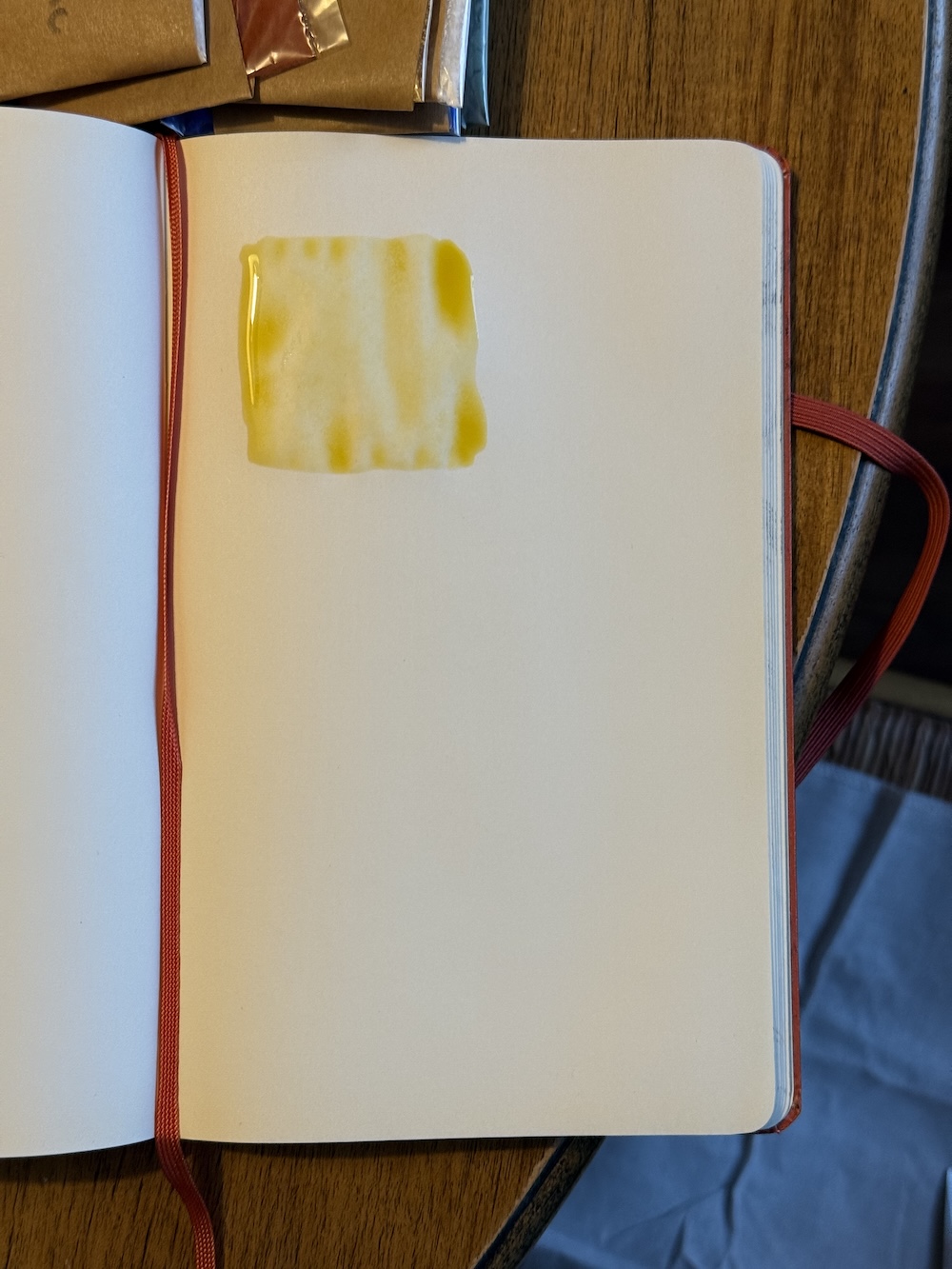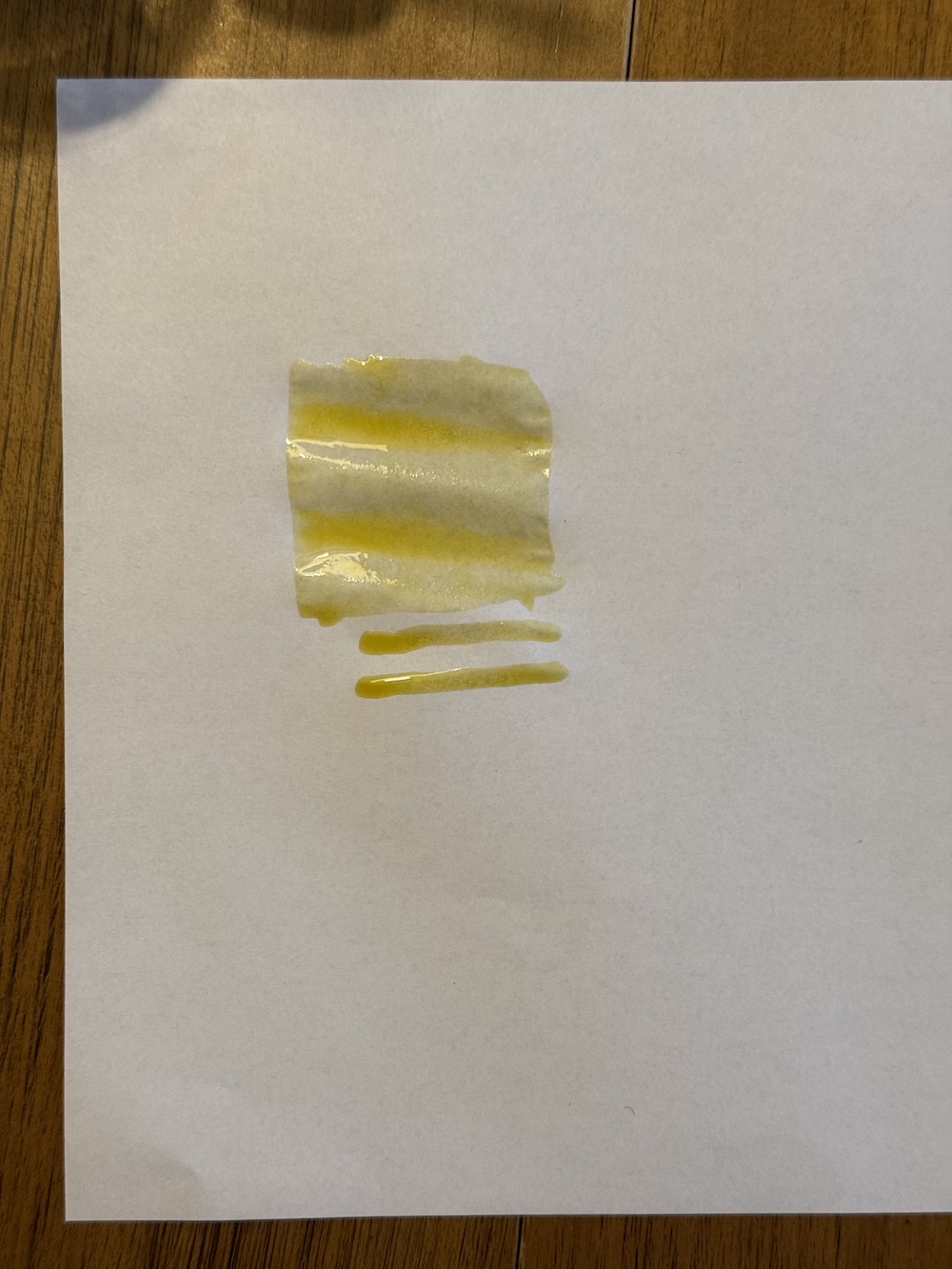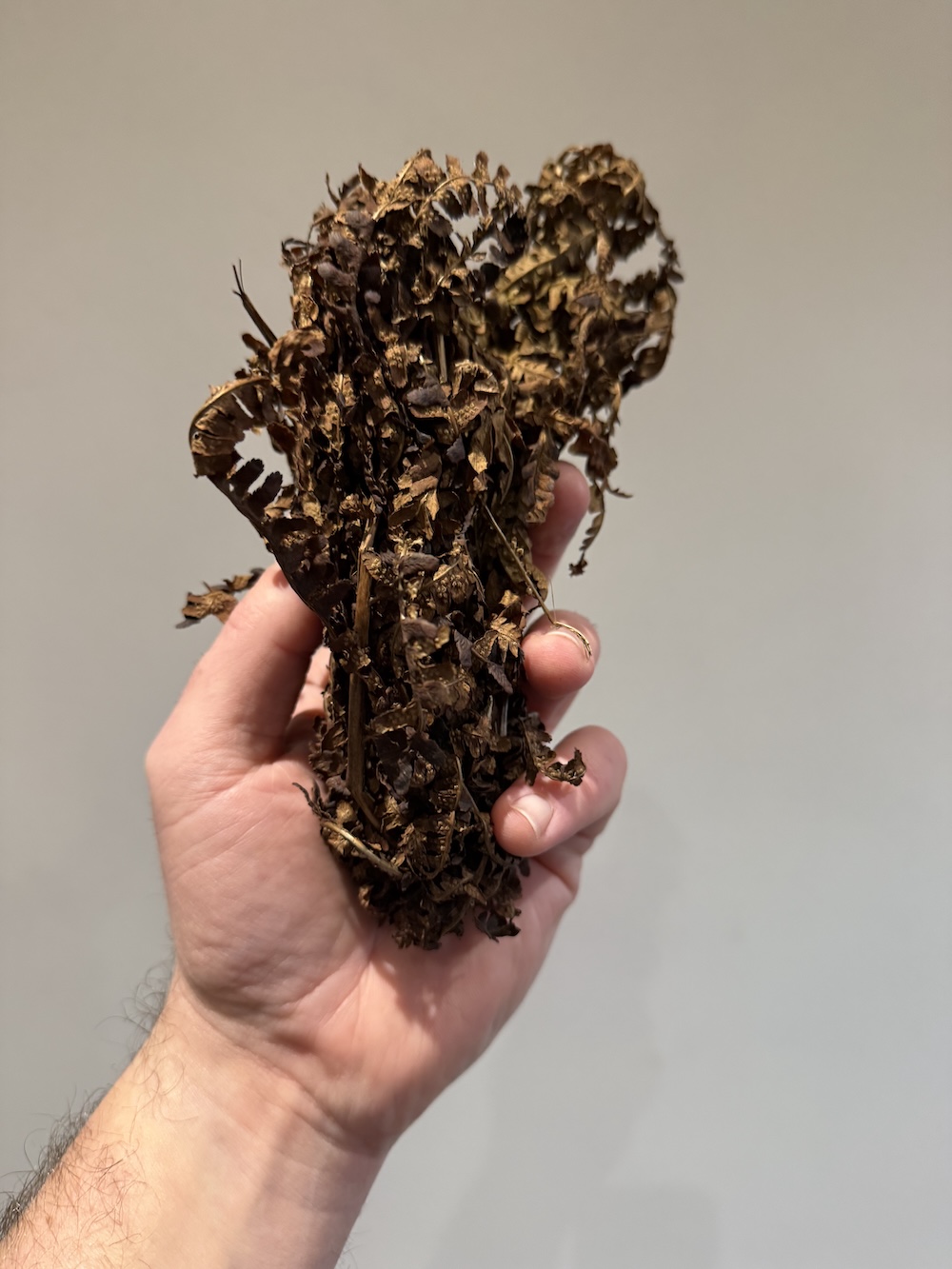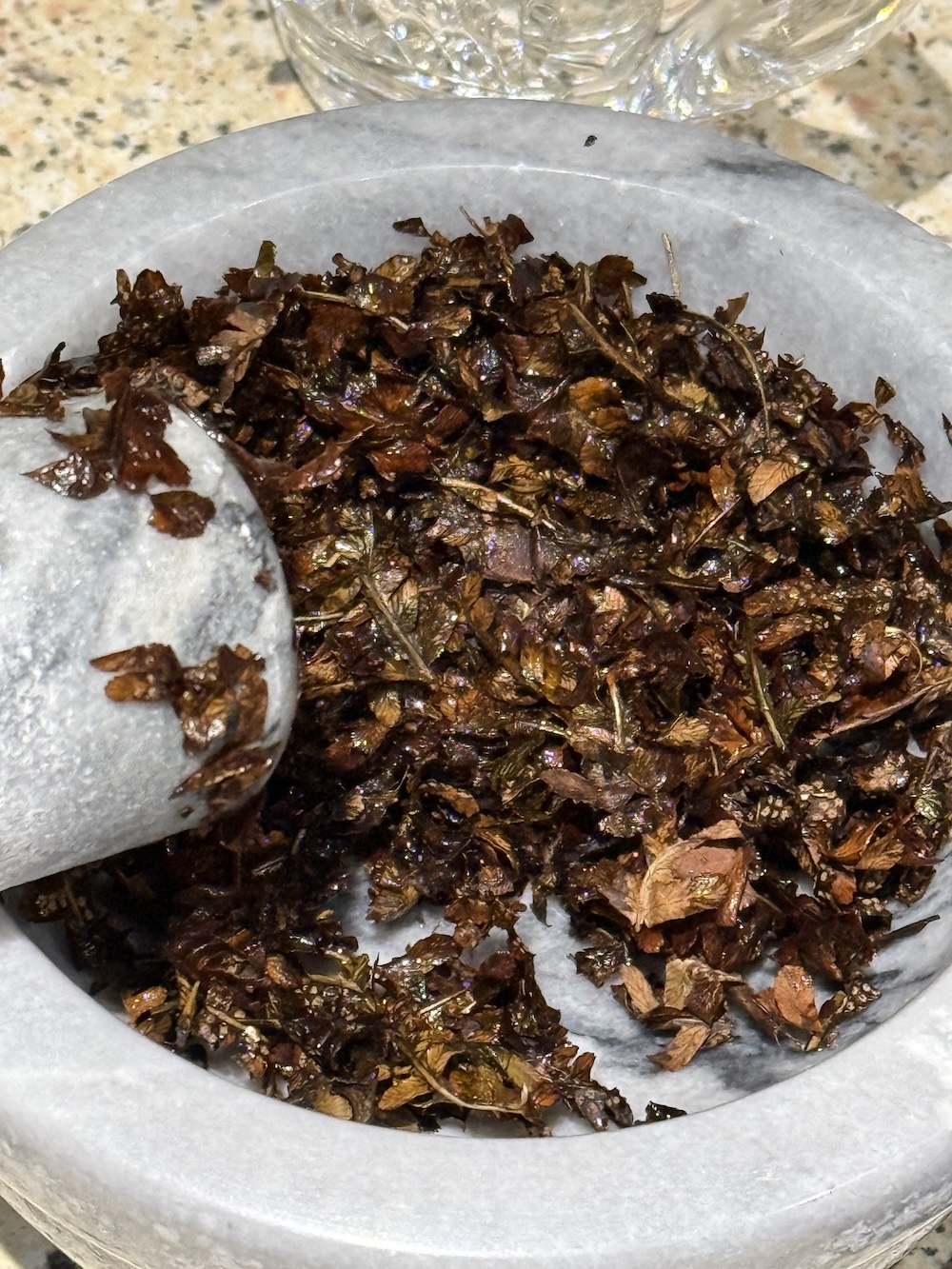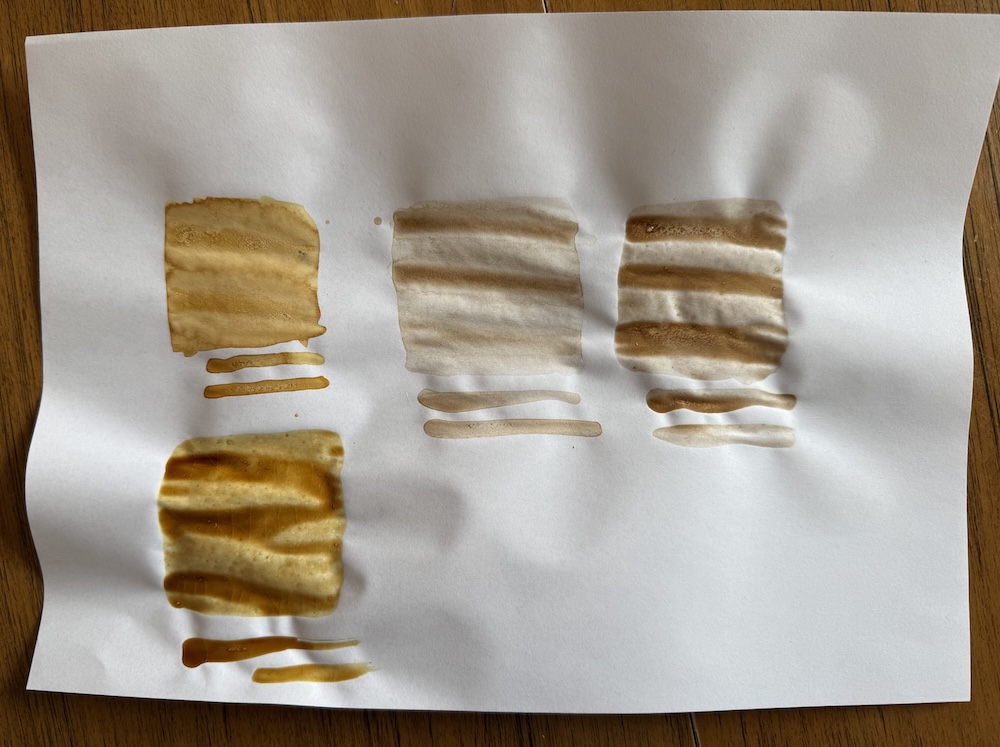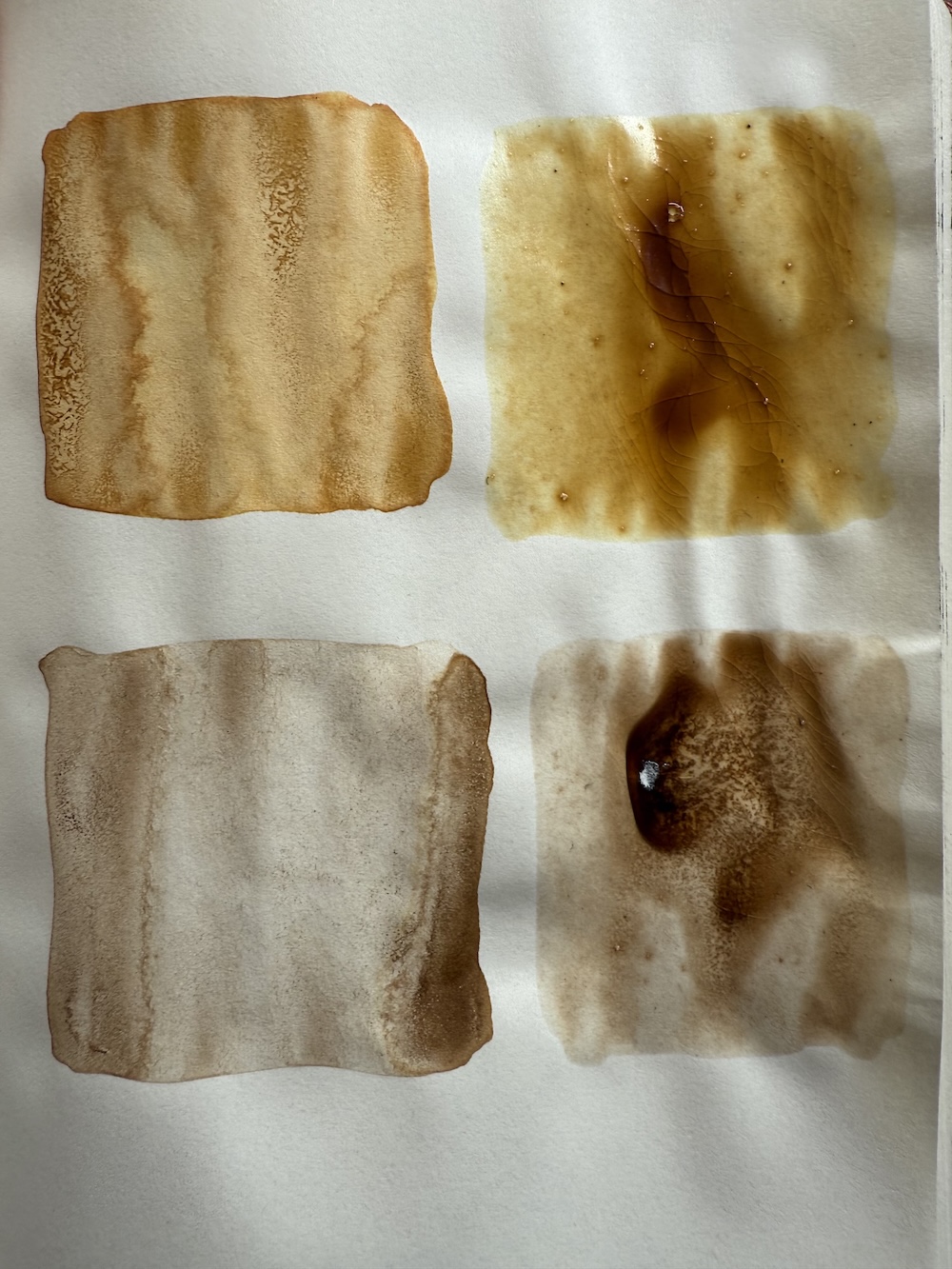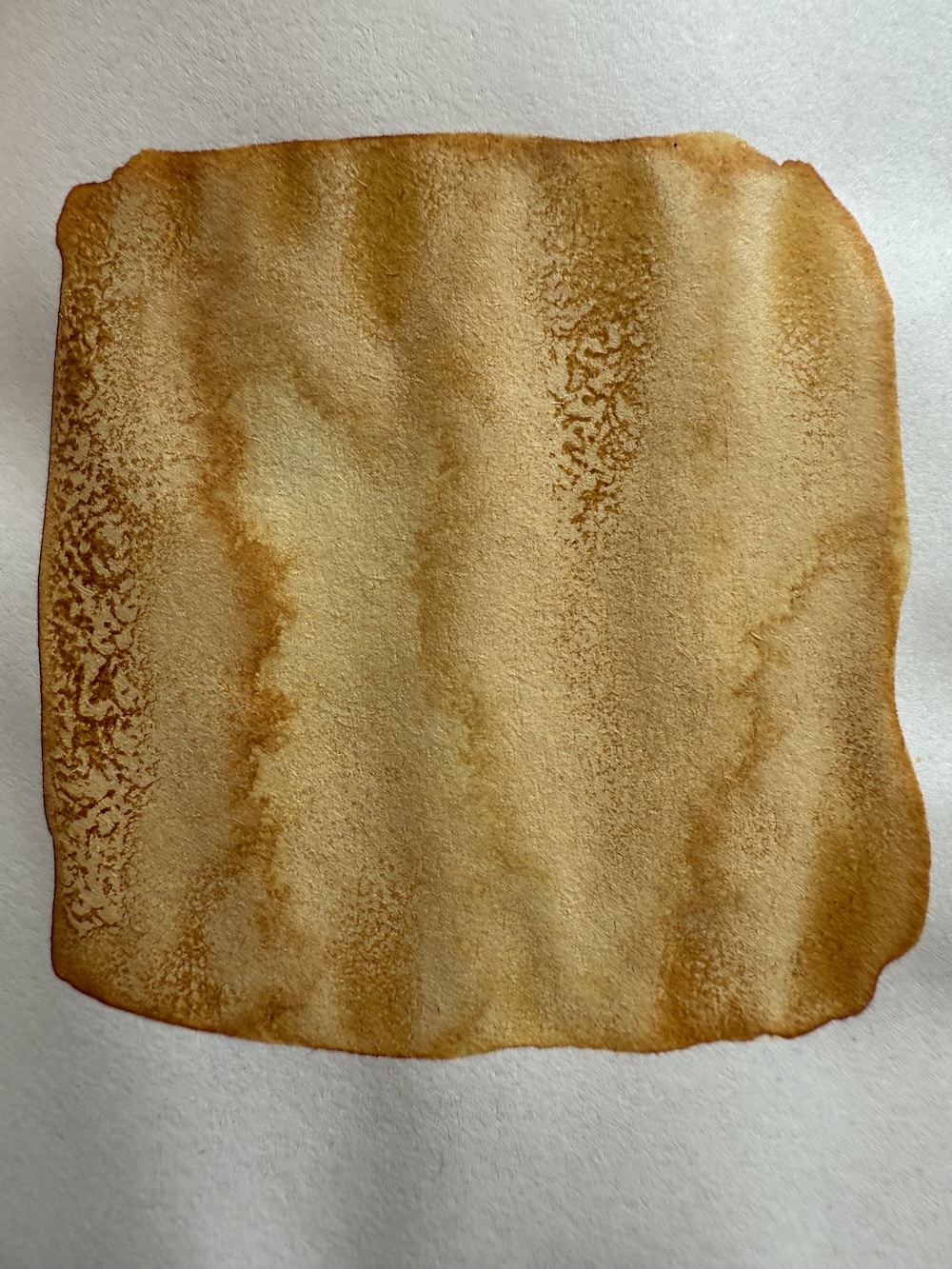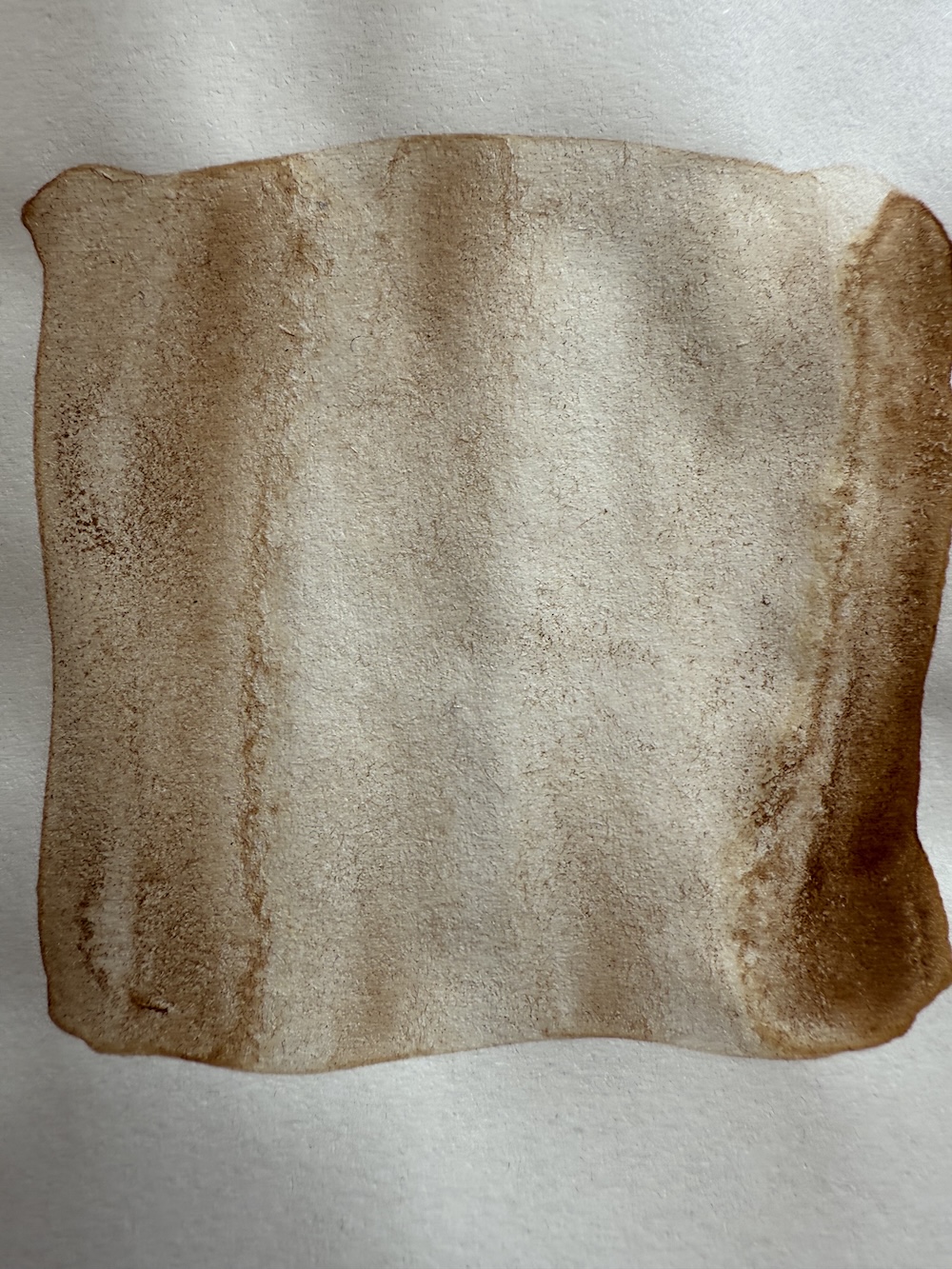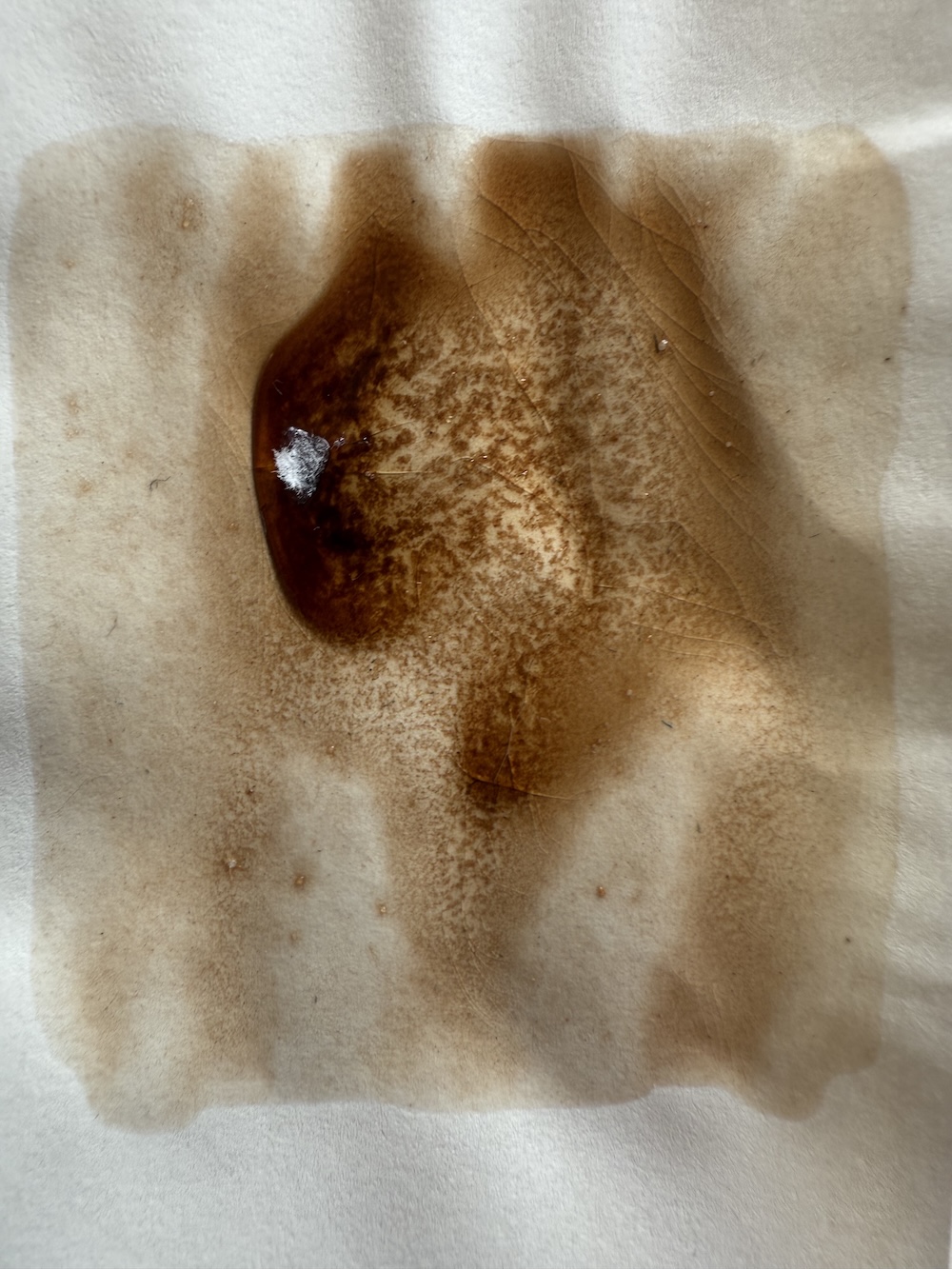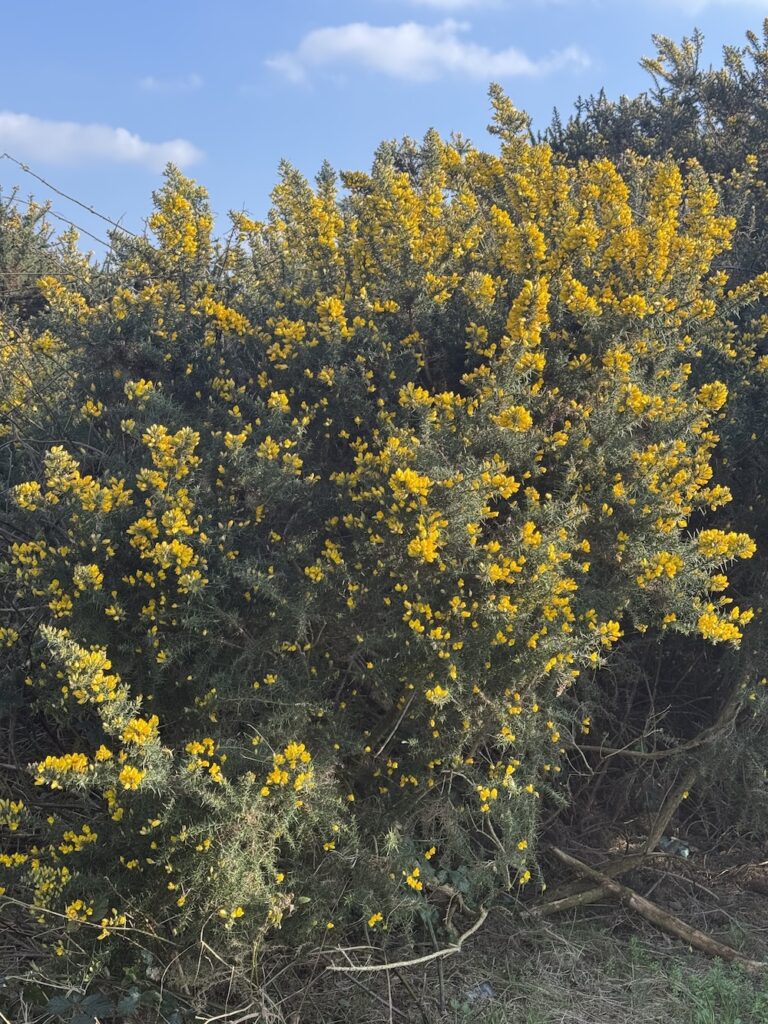
I collected gorse leaves from the Lagan Meadows and some dried out fern on a walk along the Bushmills railway, near the Giant’s Causeway.
I managed to extract a strong yellow pigment from the gorse but the fern didn’t produce so much because it was dried out. I wondered about the small amounts of pigment that this process produces. It is fine for painting test swatches but what about producing many frames of animation?
I had purchased gum arabic with the funding as it acts as a binding agent when creating pigments and paints. It would help to bind the pigment and water, and maybe make the colours less likely to fade over time. I painted test swatches for the gorse and fern, then decided to add some gum arabic to each pigment to see what happened. I had no idea of how much to use so I was very liberal with my measurement. The powder made each pigment thicker, seeming to hold the colour more evenly.
To start the documentation, I decided to paint test swatches in my sketch book, noting the item and date. I also wanted to paint a test swatch on the A4 70gsm pro grade professional animation paper that I was able to purchase with my funding in order to see how it looked on it. Very quickly I noticed how the pigments warp both types of paper due to its wateriness. It’s fine for the sketchbook as it is a reference swatch, but it could be problematic for painting frame by frame on the animation paper as the warping will be noticeable when photographing them for editing the animation. I will continue this process for now.
The next day it was really interesting to see how each pigment had dried with and without the gum arabic. The latter dried with a glazed finish and slightly smoother colour but more thicker on the paper. I liked the look of both finishes but the pigments that dried without the gum arabic gives an interesting natural texture to them which I think I prefer. I decided to not use the gum arabic again at the moment until I research more about how to properly use it.
